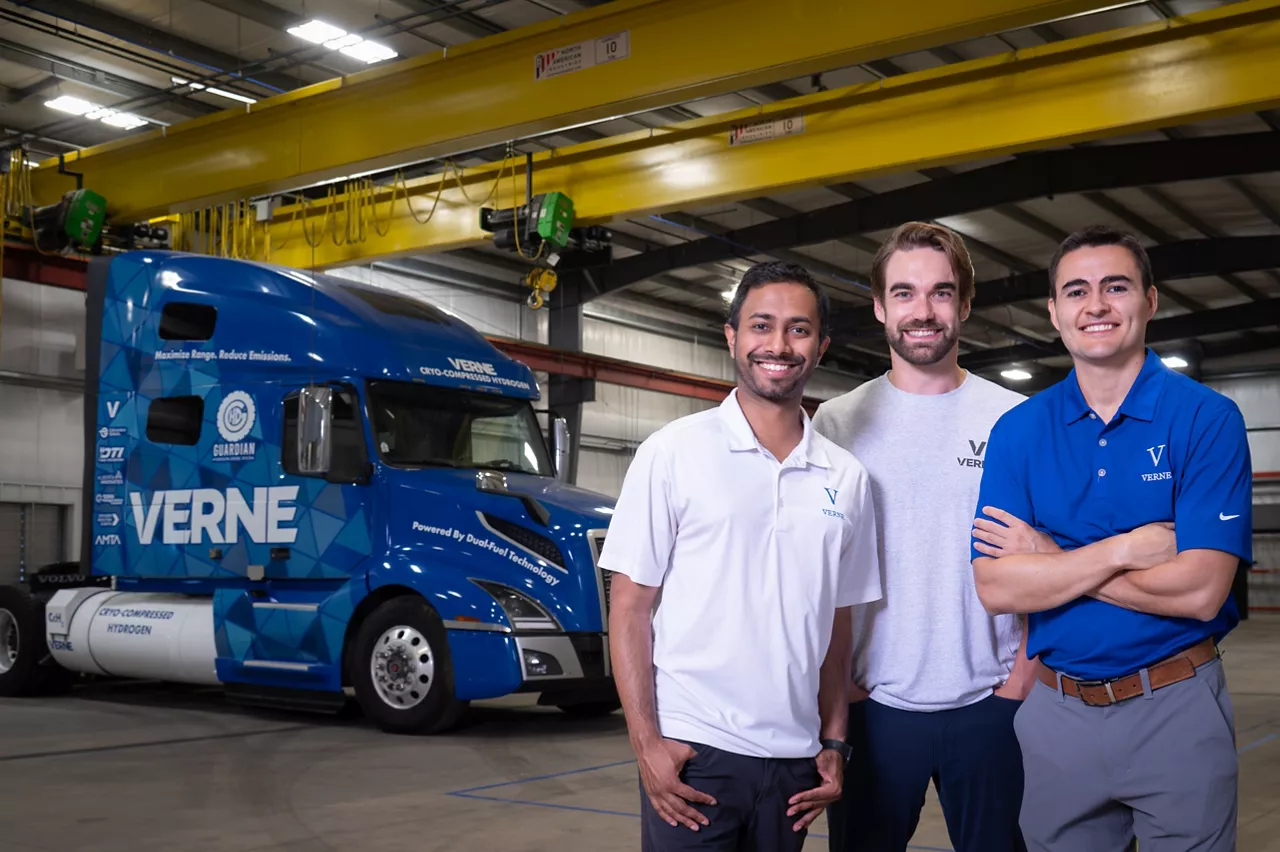Denser form of hydrogen storage promises faster refueling and lower costs for hydrogen aviation
Hollister, CA & San Francisco, CA, January 16, 2024 — ZeroAvia and Verne today announced that they have signed an MOU to jointly evaluate the opportunities for using cryo-compressed hydrogen (CcH2) on-board aircraft and for conducting CcH2 refueling from gaseous hydrogen (GH2) and liquid hydrogen (LH2) sources.
ZeroAvia is a leader in zero-emission aviation, focused on developing hydrogen-electric engines for all types of aircraft as the most environmentally and economically-friendly solution for the industry’s growing climate change impact. Aviation accounts for ten percent of all U.S. transportation greenhouse gas (GHG) emissions and three percent of total U.S. GHG emissions, according to the Environmental Protection Agency.
Verne is a hydrogen storage and refueling technology startup focused on solutions using cryo-compressed hydrogen for heavy-duty transportation. Cryo-compressed hydrogen stores gaseous hydrogen at cold temperatures, increasing the energy density of the fuel, which could enable a longer range compared to GH2 powered aircraft.
According to analysis by Verne, cryo-compressed hydrogen can achieve 40 percent greater usable hydrogen density than liquid hydrogen and 200 percent greater usable hydrogen density than 350 bar gaseous hydrogen. Additionally, the application of cryo-compressed hydrogen promises to significantly reduce the cost of densification and refueling time, increase dormancy time relative to LH2 systems, and potentially eliminate venting for pressure management.
ZeroAvia and Verne will assess the potential benefits of scaling CcH2 storage and refueling infrastructure at airports across the world, as hydrogen-electric propulsion scales to support larger and larger aircraft. The two companies will also work together to develop a model for initial airport locations in California.
Access the full press release: https://zeroavia.com/zeroavia-and-verne-partner-to-explore-cryo-compressed-hydrogen-for-airports-and-aircraft/
About Verne
Verne is commercializing high-density hydrogen platforms for the heavy-duty transportation industry. Verne’s cryo-compressed hydrogen platform can unlock zero-emission operations in sectors including aviation, trucking, port vehicles and hydrogen distribution. Verne has Letters of Intent for hundreds of Class 8 trucks and is working with multiple of the leading OEMs. Verne is financially supported by Amazon’s Climate Pledge Fund, Caterpillar Venture Capital, and Collaborative Fund. Verne is also supported by Breakthrough Energy Fellows and the Department of Energy’s ARPA-E. For more information, please visit verneh2.com and follow Verne on LinkedIn and X @VerneH2.
Company contact:
David Jaramillo, CTO & Co-Founder; contact@verneh2.com
About ZeroAvia
ZeroAvia is a leader in zero-emission aviation with the mission of delivering a hydrogen-electric engine in every aircraft as the most environmentally and economically friendly solution for addressing the industry’s climate impact. The company is starting with engines to support a 300-mile range in 9–19 seat aircraft by the end of 2025, and up to 700-mile range in 40–80 seat aircraft by 2027. Founded in California and now with thriving teams also in Everett, WA and the United Kingdom, ZeroAvia has secured experimental certificates to test its engines in three separate testbed aircraft with the FAA and CAA and passed significant flight test milestones. The company has signed a number of key engineering partnerships with major aircraft OEMs and has nearly 2,000 pre-orders for engines from a number of the major global airlines, with future revenue potential over $10bn. For more, please visit ZeroAvia.com, follow @ZeroAvia on Facebook, Twitter/X, Instagram, LinkedIn, and YouTube.


.png)


